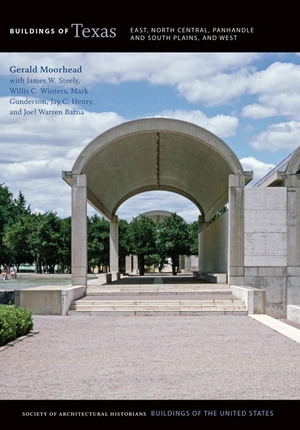
Beginning in 1871 the commercial enterprises that originally surrounded the courthouse square gradually relocated east along Commerce, Beaton, and Main streets to be near the tracks of the Houston and Texas Central Railroad. No buildings remain on the square from the pre-railroad era. The Classical Revival courthouse designed by Dallas-based James Edward Flanders is one of only two surviving of the fifteen he designed and is the fourth built for the county, replacing a Second Empire building of 1881 by F. E. Ruffini. The T-shaped plan rejects the typical cross-axis layout with a principal entrance on the south, where a grand flight of steps leads to a pedimented portico with Ionic columns and the tower rising directly overhead. The raised basement is clad in rock-faced red Burnet granite, with buff brick used on the upper three stories. The end bays project, with a pair of inset Ionic columns. A strong cornice with bold modillions extends around the courthouse above the second story, and the third story features groups of three large round-arched windows. The square tower concludes with a square tempietto with Tuscan columns and a low copper dome. The courthouse differs from Flanders’s church designs at the time, which exhibit strong Prairie Style influence. However, the classicism here is hardly academic Beaux-Arts, and Flanders uses Sullivanesque ornament throughout the interior.

